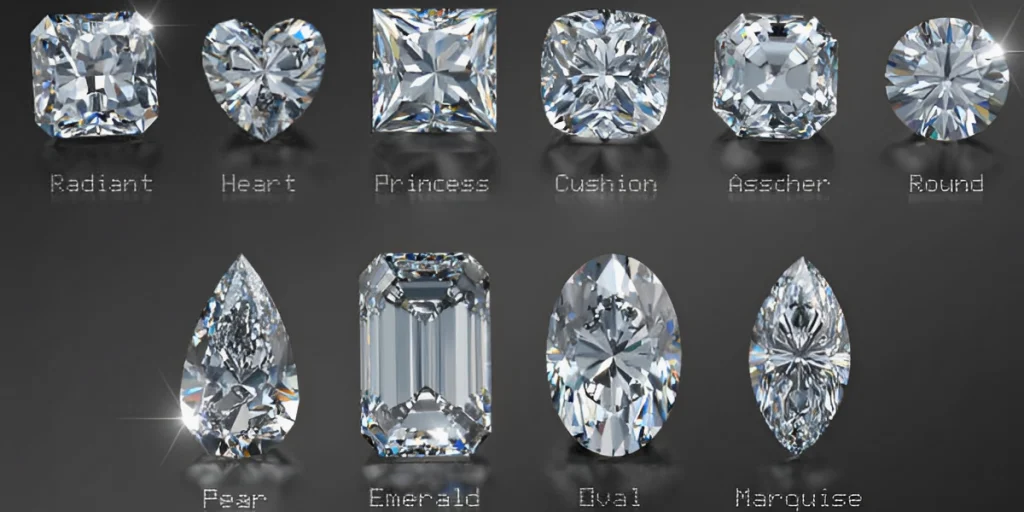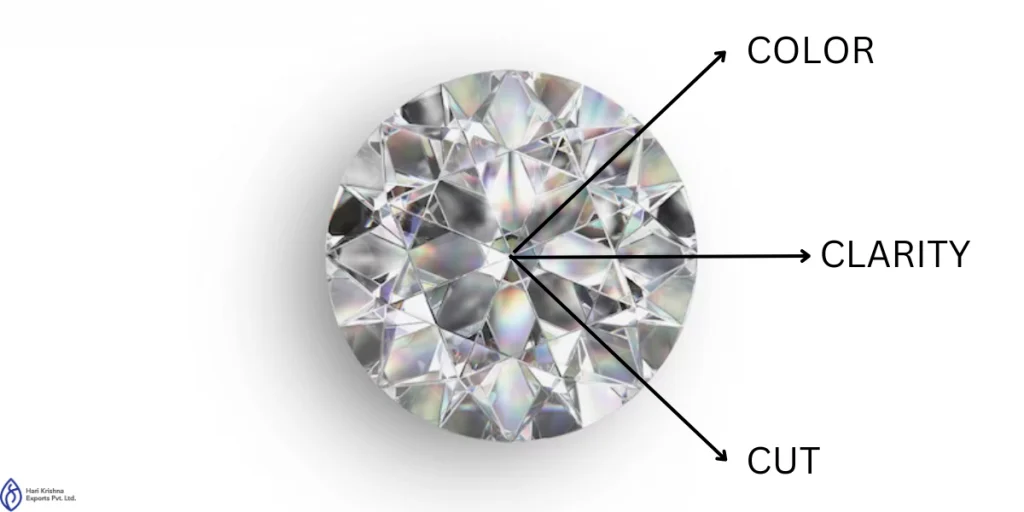How Does Diamond Shape Affect Quality and Price?
Posted by Hari Krishna
August 18, 2023
When selecting the perfect diamond, there is more to consider than just the “Four Cs” (Carat, Cut, Color, and Clarity). The choice of shape also plays a pivotal role in the selection. The diamond shape not only affects its visual appeal but also profoundly impacts its overall quality and, consequently, its price.
From the classic round brilliant to the princess cut, each diamond shape carries unique characteristics that influence not just the sparkle but the entire essence of the gem. This article will examine the intricate relationship between the shape, quality, and price of diamonds.
Diamond artisans skillfully shape diamonds – from round and oval – to modern choices such as princess, emerald, and asscher cuts. Each diamond shape possesses distinct visual characteristics that influence how light interacts with the stone, resulting in varying brilliance, fire, and scintillation levels.
Round Brilliant: This is the classic diamond shape with a circular outline. It has many facets that make it sparkle a lot. It is timeless and goes well with any jewellery style.
Princess: The Princess cut is square or rectangular. It’s known for its sharp corners and brilliant sparkle. It is a popular choice for engagement rings.
Emerald: The Emerald cut has a rectangular shape with stepped facets, giving it a clean and elegant appearance. They are great for showcasing a diamond’s clarity.
Asscher: The Asscher cut is similar to the Emerald cut but square in shape, with a distinctive “hall of mirrors” effect due to its step-like facets.
Pear: The shape looks like a teardrop, with one end rounded and the other pointed. It is unique and can make fingers appear longer when worn as a ring.
Marquise: The Marquise cut is like an elongated oval with pointed ends. It is distinctive and can make a diamond look more extensive due to its shape.
Oval: The Oval shape is similar to the round brilliant but elongated. It gives a classic look with a modern twist.
Heart: The Heart shape is romantic and unmistakable, resembling a heart. It is a symbol of love and makes for eye-catching jewellery.
Cushion: The Cushion cut has rounded corners and larger facets, giving it a vintage and romantic appeal.

The cut of a diamond, often confused with its shape, refers to the quality of how well the diamond’s facets interact with light. A well-cut diamond maximises its brilliance and fire, giving it that captivating sparkle. The round brilliant cut exhibits the most brilliance among different diamond shapes due to its specific facet arrangement and proportions. On the other hand, particular shapes, like the emerald cut or the asscher cut, prioritise clarity over brilliance, showcasing a hall-of-mirrors effect.
It refers to internal or external flaws, known as inclusions and blemishes, respectively. The impact of diamond shape on clarity perception varies. Owing to their brilliant faceting, round diamonds can better disguise minor flaws. In contrast, step-cut shapes like emeralds and baguettes make inclusions more visible due to their open facets. Hence, these shapes demand higher clarity grades to maintain visual appeal.
The choice of diamond shape can also influence how color is perceived. Round diamonds hide color better due to their intricate faceting and light play, making lower color grades less noticeable. In contrast, elongated shapes like the marquise or pear can emphasise color, especially towards the tips. Hence, consumers often select higher color grades for these shapes.

The complex interplay between different shapes of diamond, quality, and price makes each gem unique. Here is how these factors impact the price range:
The classic round brilliant diamond typically demands a premium due to its popularity and optimal light performance. Fancy shapes, such as princess, cushion, and radiant, can be affordable alternatives without sacrificing visual impact. These shapes often retain more of the original rough diamond, resulting in less wastage during the cutting process and lower prices.
A diamond’s cut quality correlates with its price. Regardless of shape, a well-cut diamond commands a higher price due to its enhanced brilliance and sparkle. Lesser-quality cuts, on the other hand, might come at a more budget-friendly cost. For the best possible sparkle, buyers should be ready to invest in a higher-cut quality, regardless of shape.
The impact of diamond shape on clarity and color perception can influence pricing. Shapes that tend to reveal inclusions, like emerald or asscher, necessitate higher clarity grades, which can escalate the price. Similarly, buyers might opt for a higher color grade if a particular shape accentuates color, as seen with some elongated cuts, affecting the final cost.
While the round brilliant remains a timeless favourite, the unique shape might experience fluctuations in demand. Initially, uncommon shapes might have a lower price, but their value could appreciate if they become popular over time. Rarity can be a double-edged sword – making a diamond more enticing and escalating its price.
The diamond shape is not just an aesthetic choice but a transformative decision that intertwines quality and value. Generally, round diamonds often carry a higher price tag than other fancy colour diamonds. Each diamond shape comes with its own set of advantages and disadvantages.
If you have inquiries about selecting the perfect diamond, contact our expert diamond dealer in US and India. With over three decades of experience as the leading diamond manufacturer in India, Hari Krishna Exports has set benchmarks in the industry.
Sign up to check out our extensive inventory of natural diamonds in 9+ shapes and the latest updates about the diamond industry and trends.
Download our hk.co app on multiple platforms, including Android and iOS.